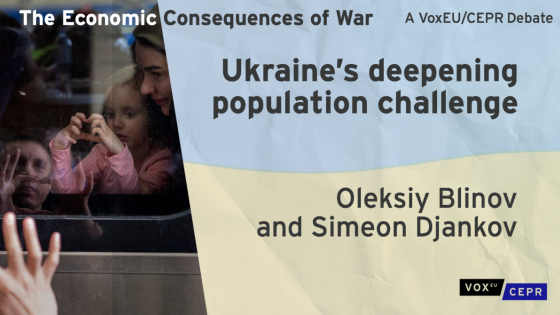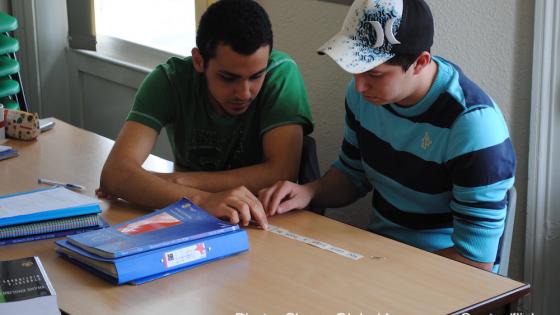A series of conflicts has brought the number of Middle East refugees to levels not seen since World War II. Today, Syria alone accounts for more than 4 million refugees and 7.6 million internally displaced people. The brunt of this humanitarian crisis is borne by the displaced people themselves, and by neighbouring countries such as Jordan, Lebanon, and Turkey. More recently, Europe has seen a surge in refugee inflows.
According to Eurostat, over one million people applied for asylum in Europe in 2015, more than double the number in 2014. The influx is greater than during the Balkan War or after the collapse of the Iron Curtain. Moreover, the refugees are very unevenly distributed within Europe. Although Italy and Greece are the largest points of entry, and Hungary registered large numbers of transiting asylum applicants over the summer, Germany, Austria, and Sweden are overwhelmingly the favoured destination of refugees.
Figure 1. EU28 asylum applications and selected destinations

Source: Eurostat; data are through November
The unprecedented inflow of refugees and their uneven distribution is deepening political divisions in Europe at a time when coordinated policy action is needed to mend a weak economy. A common approach to asylum policy is proving difficult to fashion, and the free movement of goods and people within the Schengen area is at risk, threatening economic growth and European integration (EC 2016).
In recent work (Aiyar et al. 2016), we focus on the economic challenges of the refugee influx for Europe, drawing on past experience with surges in migration. Of course, economics is only a single aspect of a complex and multi-faceted issue, but clarifying the economic costs, benefits, and opportunities represented by refugees may bring some clarity to a debate that has so far generated more heat than light.
Labour market impact
The evidence suggests that migrants integrate slowly in host labour markets. And refugees integrate more slowly than other migrants, partly because of barriers to employment while their asylum application is being considered (Hatton, 2013). However, the earning and employment gaps relative to natives diminish with time spent in the host country, as immigrants master the host language and obtain more relevant job experience.
Economic conditions at the time of entry also matter; when immigrants arrive in a period of high local unemployment, their employment rates and wages suffer for many years (Äslund and Rooth 2007). This means that the relatively low unemployment rates in the main destination countries (Austria, Germany, and Sweden) should, other things being equal, facilitate integration.
Figure 2. Employment and income of refugees relative to native workers

Notes: Conditional gap measures the difference in the outcome of interest between natives and immigrants; conditional on age, gender, years of education, language skills, host country, and time period. The role of language skills reflects how much larger these gaps will be if language skills are not controlled for.
Sources: European Social Survey, Rounds 1–6, and IMF staff calculations.
Another important stylised fact is that migrants do not ‘steal jobs from natives’. Political resistance to immigrant flows often arises from the legitimate concern that incumbents will be penalised. However, past experience with both economic and humanitarian immigration indicates that adverse effects on wages or employment are limited and temporary in advanced economies, possibly because of low substitutability between immigrants and native workers, and because investment usually increases in response to a larger workforce.
Fiscal impact
The net fiscal impact of migrants, as for natives, depends most crucially on their success in the job market. This suggests that for refugees, the speed with which they are allowed to enter the labour market—thereby reducing their reliance on social support and getting them to pay taxes—is very important. While there is considerable heterogeneity among the many studies that attempt to identify the overall fiscal impact of migrants, the consensus is that migrants have a small positive impact (OECD 2013).
The long-run net fiscal contribution of the current wave of refugees is hard to forecast.
Figure 3. Estimated net fiscal impact of immigrants, 2007-09, and present value of expected future net fiscal contribution for Germany

The new immigrants are younger than natives, which tends to imply higher net fiscal contributions. However, the jury is still out on their skill levels. While refugees typically have lower levels of education than economic migrants, the current wave of refugees—which could include a significant number of middle-income Syrians—may be better educated than past ones.
Growth impact
The short-run impact on growth is expected to operate largely through the fiscal expansion associated with supporting the asylum seekers. On a GDP-weighted basis, average budgetary expenses for asylum seekers in EU countries could increase by 0.05% and 0.1% of GDP in 2015 and 2016, respectively, compared to 2014, with the largest expenditures incurred in Germany, Sweden, and Austria. These estimates are highly tentative, reflecting, in particular, uncertainty over the number of asylum seekers and country-specific definitions of what constitutes refugee expenditures.
Model simulations suggest that the initial effects on aggregate EU GDP are positive but small, with the level of GDP lifted by about 0.13% by 2017. The impact differs considerably across countries, reflecting the asymmetric distribution of the asylum seekers relative to countries’ own populations. The largest impact is in Austria, with GDP rising by 0.5% by 2017, followed by Sweden (0.4%), and Germany (0.3%).
The medium-term impact arises mainly from the increase in labour supply, and therefore depends on the speed and success of labour market integration discussed earlier. By 2020, the level of GDP could be about 0.25% higher for the EU as a whole and between 0.5 and 1.1% higher in the three main destination countries. But this assumes that labour integration proceeds successfully, with the initial employment gap between new labour market entrants and the natives narrowing over time in line with previous experience. Under a ‘slow integration’ scenario depicted by the dashed lines below, the positive output impact would diminish but government debt and the unemployment rate would rise further.
Figure 4. Impact of refugee inflows

Policy recommendations
A range of policies can foster refugees’ economic integration. Although the specific design of suitable policies is ultimately country-specific because countries differ in their institutional structure and economic conditions, our study points to several areas where policy attention should be directed, including asylum regulation, labour and product markets, housing, and education.
Because quick labour market integration is crucial, asylum seekers should be allowed to work and receive targeted support early on. Legal obstacles such as restrictions on asylum seekers working while their case is under review should be eased. Active labour market policies should aim to lower language barriers and leverage existing skills. For example, Sweden’s ‘introduction programme’, which links personalised training and employment assistance to financial and housing support, has proved effective at facilitating immigrants’ transition to regular jobs. In Denmark, the Netherlands, and Sweden, work at temporary agencies has also been a stepping stone towards regular employment for migrants and low-skilled workers.
Addressing labour market rigidities, a long-standing challenge in many European countries, would also help. For workers whose productivity is uncertain—which is the case with refugees—excessive employment protection of incumbents is known to severely impede the chance of being hired (Blanchard et al. 2013). Temporary wage subsidies for employers who hire immigrants have been effective in overcoming barriers to employment. Targeted and temporary exceptions to minimum or entry-level wages or other labour market regulations for refugees may also be helpful where such regulations are tight. However, the benefits of avoiding prolonged exclusion from the labour market should be weighed against the risk of creating labour market dualities that may be difficult to unwind. Incentives to find work may also need to be strengthened through tax/benefit reforms to make work pay. Flexibility would also help native workers adjust to immigration surges, by moving to more highly skilled jobs complementary to those taken up by immigrants.
Beyond labour market policies, simpler regulatory procedures, a lower administrative burden on startups, and weaker protection of incumbent businesses are associated with a higher incidence of self-employment among non-EU migrants. School systems with well-developed preschools, less school segregation, and limited early tracking of students have been found to be more suitable to the educational success of immigrants’ children. Finally, a rapid response of housing construction to the new demand may require tackling bottlenecks from overly restrictive land use regulations or cumbersome construction permitting processes, as well as ensuring that rent control mechanisms do not undermine incentives to build new affordable housing.
References
Aiyar, S, B Barkbu, N Batini, H Berger, E Detragiache, A Dizioli, C Ebeke, H Lin, L Kaltani, S Sosa, A Spilimbergo and P Topalova (2016). “The Refugee Surge in Europe: Economic Challenges”, IMF Staff Discussion Note 16/02, Washington, DC.
Blanchard, O, F Jaumotte and P Loungani (2013). “Labor Market Policies and IMF Advice in Advanced Economies during the Great Recession,” IMF Staff Discussion Note 13/02, Washington, DC.
European Commission (2016), European Economic Forecast Winter 2016.
Holger, B (2014), Der Beitrag von Ausländern und Künftiger Zuwanderung zum Deutschen Staatshaushalt, Bertelsmann Stiftung, Gütersloh.
Hatton, T (2013), “Refugee and Asylum Migration”, in A F Constant and K F Zimmermann (eds), International Handbook on the Economics of Migration, Cheltenham, UK and Northampton, MA: Edward Elgar.
OECD (2013), “The Fiscal Impact of Immigration in OECD Countries” in International Migration Outlook 2013, Paris.
Olof, A and D Rooth (2007), “Do When and Where Matter? Initial Labor Market Conditions and Immigrant Earnings”, Economic Journal 117: 422–48.










